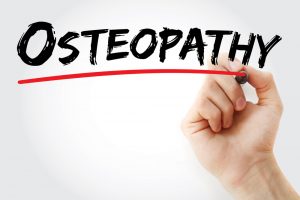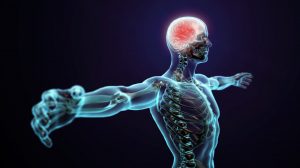Ultrasound in osteopathic clinic
 The synergy of collaboration between the EFOM FOUNDATION Boris DOLTO in Paris, SMS, Fuljifilm Sonosite and Dynamecho has opened up new perspectives in the development of the Osteopathic curriculum.
The synergy of collaboration between the EFOM FOUNDATION Boris DOLTO in Paris, SMS, Fuljifilm Sonosite and Dynamecho has opened up new perspectives in the development of the Osteopathic curriculum.
Osteopathy, often overlooked because of a lack of objective studies, sometimes based on empirical techniques, is often disputed for its subjective interpretations.
The idea – albeit out of date – of a “bone-doctor’s medicine” is unfortunately still rooted in the narrow mind of some refractory people. Fortunately, they are fewer and fewer. If this obsolete idea trend to disappeared in recent years, it is thanks to the harmonization of studies in the countries of the European Union that push for the evolution and much more rigor in the training of future graduates.
Similarly, the fact that Osteopathy is already a first-line medicine in several countries requires rigorous training both in terms of medical semiology and skills in manipulative practice. This requires among other things a mastery of biomechanics, physiology, anatomy … etc. In this context, clinical examination is of paramount importance. Indeed, from the precision of the diagnosis will flow the treatment plan in adequacy with the pathology and the complaints of the patient.
 However, there are many cases where doubts persist. In spite of a well conducted examination and all the necessary rigor, these doubts do not allow to pose with certainty the osteopathic diagnosis. Although the education of the tactile sense is high, the palpation is sometimes not enough to define exactly what lesion hides beyond the borders of the skin. Ultrasound is an ideal tool to strengthen the clinical examination and, ultimately, to become its continuation. Indeed, in addition to its safety, the ultrasound examination is non-irradiating, non-invasive and can visualize most of the tissues constituting the human body.
However, there are many cases where doubts persist. In spite of a well conducted examination and all the necessary rigor, these doubts do not allow to pose with certainty the osteopathic diagnosis. Although the education of the tactile sense is high, the palpation is sometimes not enough to define exactly what lesion hides beyond the borders of the skin. Ultrasound is an ideal tool to strengthen the clinical examination and, ultimately, to become its continuation. Indeed, in addition to its safety, the ultrasound examination is non-irradiating, non-invasive and can visualize most of the tissues constituting the human body.
The significant advantage of being able to dynamically observe osteo-articular, muscular, ligamentous structures, etc., gives to ultrasonography an undeniable place in the specialized professions of the musculoskeletal system of which osteopathy is a part.
Moreover, icing on the cake, it allows to objectify the lesions and to convert with a backhand the subjective side so much criticized of the osteopathic examination or even better to refer to a GP or a radiologist when the pathology does not fit the relevance of osteopathic care and/or would require additional examinations.
It is therefore with the same enthusiasm that we will continue our efforts to improve the quality of teaching and move together towards a more objective osteopathic medicine which, thanks to complementary tools such as ultrasound, will allow to better target our treatments or refer appropriately our patients.
I would like to thank SMS and Fujifilm Sonosite for their logistical support and especially Thierry Mercier, Dean of EFOM, precursor and innovator in the development of osteopathy and without whom all this would never have taken shape.






